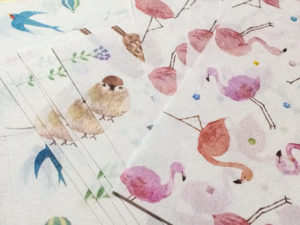

I met my husband while teaching English in Japan many years ago. Last summer, we took our sons to Tokyo and Kyoto to see the country we’d fallen in love with. Before we’d even left Shinjuku Station, my boys were fascinated by the world’s greatest vending machines—and the mountains of beautifully wrapped treats and souvenirs on display at every train station and department store. The gorgeous boxes made even simple mochi treats seem like something special.
The Etiquette of Japanese Gift Giving
In Japan, gift giving is an art. What’s important is not the monetary value of the gift, but the thought that goes into the gift, and, most importantly, the presentation. International etiquette consultant Julia Esteve Boyd describes a few points of etiquette around giving gifts in Japan.
- A Japanese person will most likely refuse the first time you offer a gift, and may refuse up to three times, so as not to seem greedy.
- Attending a dinner party empty-handed is considered rude.
- Gift giving is essential in business.
- If offering a gift to a group, it must be offered to the entire group at the same time.
- Any gift must be beautifully wrapped.
- All gifts must be given and received with both hands.
Most of us who aren’t Japanese aren’t going to adopt the tradition of refusing gifts if it’s not part of our culture, but it’s easy to make your gifts unique with Japanese wrapping styles. In Japan, gifts are traditionally wrapped in handmade washi paper—often using different patterns to balance each other—or in beautiful cloth called furoshiki, which can be made of silk, cotton, or even less expensive (VIDEO)materials like rayon and nylon.
Jennifer Porter, a gift retailer, manners coach, and founder of Satsuma Designs, loves furoshiki gift wrapping because “it turns any gift into a work of art, and furoshiki reflects the Japanese philosophy that the value of the gift is less important than the act of giving.” Porter goes on to explain that “furoshiki is also about care and sustainability, as every aspect of the gift is meant to be used and enjoyed.”
Furoshiki: Turn Gifts Into Works of Art

Want to try furoshiki for yourself? You can find the cloth online, and then check out tutorials on YouTube to learn the easiest and prettiest ways to fold furoshiki. Once you’ve got the hang of it, think beyond furoshiki and upcycle cloth napkins, vintage hankies, bits of lace, or fabric leftovers in vibrant patterns. Our favorite furoshiki pro? Paper Guru Shiho Masuda. Be sure to check out her 1 Minute Japanese Gift Wrapping with Furoshiki.

If you’d like to try your hand at Japanese-style paper gift wrapping, washi paper and washi tape can easily be found online or in local shops that specialize in Japanese goods. Then, check out Pinterest for ideas on wrapping with washi. We also love Shiho Masuda’s examples of wrapping with complementary patterns and tuxedo folds.
When your gift is ready to go, try the Japanese tradition of always presenting it with both hands. No matter how big or small the gift, the person you’re giving it to will feel truly appreciated.
If you’re seeking gift swap ideas, check out Elfster’s useful Ochugen and Oseibo gift guide or simply start a gift exchange today. For year-round gifting inspiration, follow us on Facebook, Instagram @Elfster or Twitter @Elfster .

